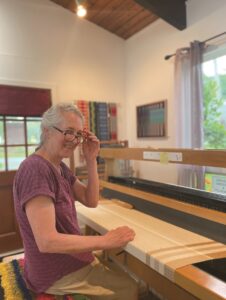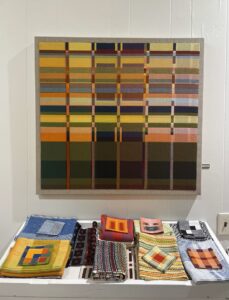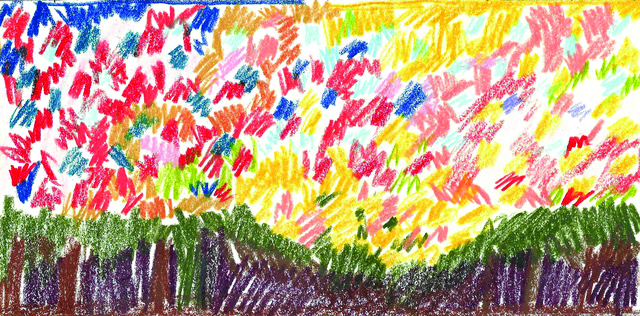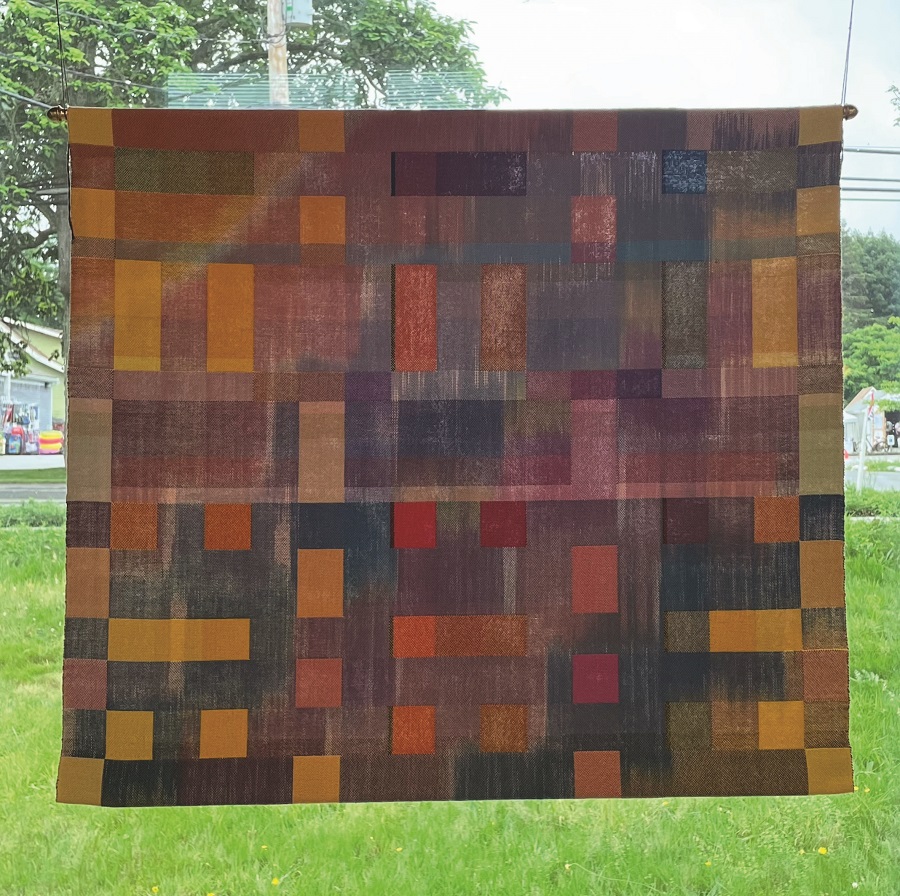BREWSTER — Eight big floor looms stand in various stages of use in Gretchen Romey-Tanzer’s studio. The walls are lined with vibrant spools of wool and cotton and with the weaver’s woven pieces, framed as artwork.
“I’m trying to have people treat weaving seriously,” says Romey-Tanzer, who uses the space as both studio and gallery.
Anyone can use the looms here for a monthly fee. Romey-Tanzer also teaches classes, from beginning weaving, to rug weaving, and rya knotting (a type of Scandinavian knotted-rug technique). There are kitchen towels, a blanket, and a rug for a staircase underway alongside her own work.

Most of the looms come to her used. Brand new, they can cost anywhere from just shy of $1,000 to $10,000, she says, adding that people who know about her business contact her about looms. She also finds them on websites where used equipment is sold. Romey-Tanzer cleans them up, fixes broken parts, and sells them at prices intended to help keep weaving accessible.
In her studio are full-size counterbalance looms, which can produce large blankets, to small table looms, which can weave a maximum width of eight inches. The best looms are sturdy ones, Romey-Tanzer says. They’re made of maple, a wood that can withstand stress.
“This is the oldest one I have right now,” she says, pointing to a light-colored loom in a corner of the studio. “It’s at least 100 years old.” It came from Dearborn, Mich., she says, where it was used in the Ford Motor Plant for making cushions.
“I was a kid who liked to make stuff,” Romey-Tanzer says. She grew up in upstate New York; her mother was an artist and her father a scientist. Her mother bought her a floor loom in high school after years of watching her weave potholders on metal frames. “I didn’t know how to set it up or anything,” she says. But she sought help from local weavers who were a part of the Northern Adirondack Weavers Guild, and by the end of high school, her art portfolio included ceramics, printmaking — and weaving. She was accepted into the School for American Craftsmen at the Rochester Institute of Technology.

During her third year there, she studied at the Joensuu Handcraft School in Finland. That’s where she was inspired to see weaving as art rather than a craft focused only on the functional. Whereas American fiber arts in the 1970s were focused on heavy textures and big macrame pieces, she said, the Scandinavian aesthetic was smoother and employed finer threads. Later, Romey-Tanzer studied at the Banff Center of Fine Arts, where the style was more avant-garde, she says, and again, more about art than craft.
After finishing an M.F.A. at Indiana University, Romey-Tanzer moved to Orleans, where she had family roots. She was a high-school art teacher for 29 years at Cape Cod Academy in Osterville, and she bought the building that now houses Tanzer’s Fiberworks during that time. She set out to “switch things around” in 2014 and has been teaching weaving classes here since.
She describes her design style as modern, influenced by the Bauhaus and Frank Lloyd Wright. She uses only cotton thread. It’s smoother and more forgiving than wool yarn, she says, which is “stickier.” She stitches her woven pieces onto stretched linen canvases, made for hanging on the wall.

Romey-Tanzer approaches a large piece, 42 by 52 inches, hanging on the wall. It took her six weeks to complete. The gray background, blended with dark and light shades of gray thread, looks naturally shadowed. Crisp, bright red rectangles occupy the foreground. These, too, are shaded light to dark using fine lines, creating the illusion of depth.
“It’s called ‘Third Piece,’ ” she says. “Since a lot of my work is nonrepresentational, it’s sometimes better not to give it a name. Then people can fill in their own ideas.”
An older work, done in 1991, hangs in one window of the studio. It’s titled “Voyager.” Romey-Tanzer says, “I’ve always been interested in outer space.” The piece hangs from a single horizontal rod at the top. Rectangles and squares of red, orange, pink, and yellow stand out against those of purple, blue, and green. The colors are grainy, almost translucent-looking in some places. This is the front of the work. Flipping the cloth to its back side, the squares and rectangles are in different colors and positions.

Romey-Tanzer uses a double-weave structure, where, at the loom, she weaves two layers of cloth together at the same time. The two-layered cloth is made by weaving two or more sets of warps (vertical threads) and one or more sets of wefts (horizontal threads) simultaneously. The interconnected cloths can trade places between the top and bottom of the piece. Each layer has its own color balance that is then introduced into the opposing layer.
For all of her work, Romey-Tanzer makes a sketch before taking to the loom. Some sketches are meticulously planned with colors and measurements. “Others are more cryptic,” she says.
She produces a piece of paper with a few small rectangular color-block strokes. Done in 2021, they represent autumn leaves that she saw by the Orleans Town Hall.

She distilled the rough drawings into a weavable pattern on paper — squares and rectangles of overlapping colors. Working at the loom, she used the double-weave structure to bring forward different layers of color, which change with every inch. While each square is vivid, the squares seem to blend, too, forming a shifting representation of sky, leaves, shadow, and light.
“All that color change drove me crazy,” she says, but she wove two more “sister pieces” based on that sketch.
“They were such beautiful trees,” Romey-Tanzer says. “There’s dark shadow under them. The leaves were pink and light yellow. The sky was a vivid blue. I said, ‘Oh my gosh, I can do something about that.’
“People sometimes see a piece of fabric as non-art,” she says, “but I’m trying to treat a textile as a piece of art.”



